"Art and Love in Renaissance Italy" @ the MET, NY
”Venus with an Organist and a Dog,” detail, by Tiziano Vecellio, circa 1550. Photo: Museo Nacional del Prado, Madrid
Two-Handled Vase with the Arms of Medici Impaling Orsini, Florentine region (perhaps Montelupo), 1470–80. Tin-glazed earthenware (maiolica); H. 15 1/4 in. (38.7 cm), foot damaged and repaired - Detroit Institute of Arts, Gift of the Women's Committee with additional funds from Robert H. Tannahill, 1937 (37.74)
Wineglass or Sweetmeat Cup (Confittiera) with Scenes of Virgil and Febilla. Venice, ca. 1475–1500. Glass, enameled and gilded; H. 8 1/2 in. (21.6 cm), W. 4 7/8 in. (12.4 cm). Inscribed: VERBLIO; VENITE - The Metropolitan Museum of Art, New York, Gift of J. Pierpont Morgan, 1917 (17.190.730a,b)
Clasped hands; couples in facing profile; garlands of myrtle; the words fede (faith) and volo (I wish to): these are graphic declarations of love and fidelity that grace Renaissance art. Conjuring up elements of contemporary marriage ritual and tokens of amorous exchange, they afford an unparalleled insight into private life in Renaissance Italy. Most of the objects gathered here are associated in some way with marriage and the family that followed from it. Marriage itself in this period was not uniform, without clear boundaries or legal consistency. Indeed, before the edicts of the Council of Trent systematized the requirements of a proper wedding in 1563, only mutual consent was an absolute necessity for marriage. People did not need to be married in church or by priests; they did not need to post banns or to appear before a notary; they did not need to exchange rings; nor were witnesses required (although most weddings were public acts). Clandestine marriages, undertaken to outwit disapproving parents, were common.
“The Combat of Love and Chastity” by Gherardo di Giovanni del Fora.
Bowl with the Arms and Devices of Pope Leo X and of Families Allied by Marriage with the Medici, Tuscany, Montelupo, possibly Sartori workshop, 1513–21. Tin-glazed earthenware (maiolica); H. 8 1/8 in. (20.5 cm), Diam. 14 1/2 in. (36.8 cm). Inscribed: SENPUR; SUAVE; DIVINA PONTETIA; SUMUS VIVIMUS; RENOVABITUR The British Museum, London (1855.1201.76)
Mandora or Chitarino. Northern Italy, Milan (?), ca. 1420. Boxwood, rosewood; 14 1/8 x 3 3/4 x 3 1/8 in. (36 x 9.6 x 8 cm) - The Metropolitan Museum of Art, New York, Gift of Irwin Untermyer, 1964 (64.101.1409)
It was the very fluidity of the marriage vows that made the traditional rituals and their public manifestations so important for weddings sanctioned by society. This was true at all social levels but was especially vital for the wealthy. Indeed, public wedding ceremonies and the material objects generated for them provided the physical demonstration of the marriage's legitimacy. The gifts and paraphernalia that formed the cornerstones of wedding celebrations were discussed at length and in great specificity in the abundant contemporary texts that recorded particular weddings and inventoried couples' belongings, as well as in more generalized writings on marriage.
Fra Filippo Lippi (b. Florence, ca. 1406–d. Spoleto, 1469), Portrait of a Woman and a Man at a Casement, ca. 1440–44,
Tempera on panel; 25 1/4 x 16 1/2 in. (64.1 x 41.9 cm), Inscribed on edge of woman's cuff: LEALT[A]. The Metropolitan Museum of Art, New York, Marquand Collection, Gift of Henry G. Marquand, 1889 (89.15.19)
Low-Footed Bowl with Bust of a Woman. Urbino or Castel Durante, ca. 1530. Tin-glazed earthenware (maiolica); Diam. 8 1/2 in. (21.5 cm). Inscribed: LIVIA BELLA - The Metropolitan Museum of Art, New York, Robert Lehman Collection, 1975 (1975.1.1084)
Dovizia. Florence, late 15th–early 16th century. Glazed terracotta; H. 28 in. (71.1 cm) - The Metropolitan Museum of Art, New York, From the Collection of James Stillman, Gift of Dr. Ernest G. Stillman, 1922 (22.16.6)
Marco Antonio Altieri's treatise Li nuptiali (Nuptials), written in Rome between 1506 and 1513 and prompted by a wedding that took place in 1504, maps out a lengthy and lavish series of ceremonies that began with an agreement including a ratified list of the dote, or dowry. Each of the following rituals involved an exchange of particular gifts. The most legally binding ritual was the so-called arraglia, during which the bride and groom were asked to pledge themselves to each other while a sword was held over their heads. The bride was then presented with three rings, one of which bore the arms of the groom's family. Other gifts exchanged during the arraglia were a silver dish and a boccale, or jug, displaying the arms of both families.
Paolo di Stefano Badaloni, called Paolo Schiavo (b. Florence, 1397–d. Pisa, 1478). Inner Lid from a Cassone with Venus Reclining on Pillows. Florence, 1440–45. Tempera on panel; 20 x 67 in. (50.8 x 170.2 cm) without frame. Museo Privato Bellini, Florence (182)
Inkstand with Busts of a Couple and Fede Motif and Inscription. Probably Faenza, ca. 1500. Tin-glazed earthenware (maiolica); 3 1/4 x 7 7/8 x 11 in. (8.2 x 20 x 27.9 cm). Inscribed: IO.TE.DO.LA.MANE / DAME.LA.FEDE - Museum of Fine Arts, Boston, John H. and Ernestine A. Payne Fund (56.310)
Velvet Fragments with Medici Arms. Florence or Venice, 1440–1500. Silk, metal thread; 31 x 21 in. (78.7 x 53.3 cm) - The Metropolitan Museum of Art, New York, Fletcher Fund, 1946 (46.156.118)
A Mass was usually planned as one of the final group of elaborate ceremonies that concluded with the bride's arrival in her new home, where her husband's family lived. In the days leading up to the Mass, feasts were arranged and the bride's home was decorated with tapestries and sideboards laden with plates and glassware. The bridegroom, accompanied by music, presented the bride with her clothes and ornaments, which included a chain and a diadem. On the Sunday morning of the Mass, she wore these along with earrings and a necklace with a jeweled pendant (89.15.19), as well as a belt her father placed around her waist (17.190.963). She then rode astride a white horse to church, where myrtle hung and incense burned (1986.138). Following the Mass, the bridegroom led his bride home to another great feast; grain and vegetables were thrown from the windows and guests shouted out lascivious jibes. During this banquet and on the following days, epithalamia (marriage orations and poems) might be read and comedies and dances were performed. In a culminating moment, on the third day, the bride's mother visited and opened the cassoni, or bridal chests, to confirm that they held the linen and other items that had been agreed upon (14.39).
Bartolomeo di Fruosino, Florentine, 1366/69–1441, Childbirth Tray (Desco da Parto) with a Confinement-Room Scene (recto) and Urinating Putto (verso), Florence, 1428, Tempera on panel; 23 1/4 in. (59 cm). Inscribed on front: QUESTO SI FE A DI XXV DAPRILE NEL MILLE QUATTROCENTO VENTOTTO (This was made on the 25th of April, 1428); on reverse: FACCIA IDDIO SANA OGNI DONNA CHFFIGLIA EPADRI LORO . . . RO . . . ERNATO SIA SANZA NOIA ORICHDIA ISONO UNBANBOLIN CHESULI . . . A DIMORO FO LAPISCIA DARIENTO EDORO (May God give health to every woman who gives birth and to the child's father . . . may [the child] be born without fatigue or danger. I am a baby who lives on a [rock] . . . and I make urine of silver and gold.) - Private collection (on loan to The Metropolitan Museum of Art, New York [L.1995.17])
Plate with Fede Motif, Emilia-Romagna, Faenza, ca. 1490–1510, Tin-glazed earthenware (maiolica); Diam. 11 1/4 in. (28.5 cm). Fondazione Cassa di Risparmio di Perugia (Wilson-Sani 20)
Marco del Buono Giamberti (Florentine, 1402–1489) and Apollonio di Giovanni di Tomaso (Florentine, 1415/17–1465). Cassone with The Conquest of Trebizond. Florence, 1460s. Tempera, gold, and silver on wood; distemper on inner lid, 39 1/2 x 77 x 32 7/8 in. (100.3 x 195.6 x 83.5 cm). Inscribed at left, on city walls: S FRA[N]CES/CO ([church of] San Francesco); upper left, within city walls: S. SOFIA. ([church of] Santa Sophia) DEILO.PER . . . ORI ([undeciphered]; at left center, on city walls: PERA. (Pera [formerly Galata]); on Bosporus: LOSTRETTO. (strait); at center, on city walls: LOSCUTARIO (Scutari [present-day Üsküdar]); farther back: CHASTEL NVOVO (new fortress [Rumeli Hisari]); at right, on city walls: TREBIZOND[A] TAN[B]VRLANA (Tamerlane) - The Metropolitan Museum of Art, New York, John Stewart Kennedy Fund, 1914 (14.39)
If we move to Florence and Venice, we find different sequences of events but many of the same exchanges. In Florence, great weight was given to the impalmamento, the moment when hands were clasped at the signing of a contract. The "ring day" (the anellamento)—when a ring was placed on her finger and the couple exchanged verbal vows—took place in the home of the bride, with her father or guardian in attendance. Then the bride was brought to her husband's house in a public and festive manner (the so-called menare a casa). It was the husband's responsibility to organize the bedchamber. The Florentines kept scrupulous records and inventories about the contents of both the donora—the trousseau that was part of the dowry—and the so-called countertrousseau of gifts and clothing provided by the husband. These luxury goods, with which the women in Florentine nuptial portraits are bedecked, belonged to the husband and were sometimes pawned or sold pitilessly some years after the marriage. The groom's gifts to the bride were considered an outward symbol of her integration into his family; once they had served this purpose, he could use them for his own purposes.
Giovanni di Ser Giovanni Guidi, called Lo Scheggia (Florentine, 1406–1486), Childbirth Tray (Desco da Parto) with The Triumph of Fame (recto) and Medici and Tornabuoni Arms and Devices (verso), Florence, ca. 1448, Tempera, silver, and gold on panel; Diam., overall, 36 1/2 in. (92.7 cm); recto, painted surface, 24 5/8 in. (62.5 cm); verso, painted surface, 29 5/8 in. (75.2 cm), Inscribed: SEMPER. The Metropolitan Museum of Art, New York, Purchase in memory of Sir John Pope-Hennessy; Rogers Fund, The Annenberg Foundation, Drue Heinz Foundation, Annette de la Renta, Mr. and Mrs. Frank E. Richardson, and The Vincent Astor Foundation Gifts, Wrightsman and Gwynne Andrews Funds, special funds, and Gift of Mr. and Mrs. Joshua Logan, and other gifts and bequests, by exchange, 1995 (1995.7)
Fluted Bowl (Crespina) with an Allegory of Unrequited Love, Faenza, possibly workshop of Virgiliotto Calamelli, dated 1538 twice on the border. Tin-glazed earthenware (maiolica); Diam. 10 7/8 in. (27.5 cm) - Fondazione Cassa di Risparmio di Perugia (Wilson-Sani 27)
In some ways, the weddings of Venetian nobility were the most sumptuous and elaborate in Italy. The signing of a contract of engagement called le nozze was followed by a round of activities during which the bride was presented by a master of ceremonies and dancing master called the ballerino (34.68), and the engagement was announced to both families (fermare il parentado); then the bride received her ring (l'anellamento). After this, there was a public declaration of vows; and after much feasting the bride was brought home (menare a casa). Two aspects of the Venetian rituals are striking: the public nature of the drawn-out ceremonies and the centrality of organized giving and display of gifts. Brides were not only ceremonially introduced to society but also circulated in a flotilla of gondolas, visiting their relatives in convents (34.68). Various compari, or sponsors, offered gifts to the couple, as did the principal ring-sponsor (compare dell'anello), whose gifts might include silver tableware and furs.
Jacopo Pontormo (Florentine, 1494–1557), Childbirth Bowl (Tafferia da Parto) with The Naming of John the Baptist (interior) and Della Casa and Tornaquinci Arms (exterior), Florence, 1526–27, Oil on panel; Diam. 21 1/4 in. (54 cm). Inscribed: IO - Galleria degli Uffizi, Istituti Museali della Soprintendenza Speciale per il Polo Museale Fiorentino, Florence (1890 n. 1532)
A childbirth tray depicting the meeting of Solomon and the Queen of Sheba from the workshop of Francesco del Cossa, circa 1470-73. Museum of Fine Arts, Houston
Cradle. Italy, 16th century. Carved walnut, gilding, polychromy; 35 x 41 x 22 in. (88.9 x 104.1 x 55.9 cm) - Philadelphia Museum of Art, Purchased with the John D. McIlhenny Fund (2000.117.1)
And then there were the weddings of the ruling families throughout Italy. These were spectacles that are almost impossible for us to imagine, lasting for days and for which innumerable artifacts, many of them ephemeral, were created. When Annibale Bentivoglio, the eldest son of Giovanni Bentivoglio II, ruler of Bologna, married Lucrezia d'Este (the natural daughter of Duke Ercole d'Este of Ferrara) in 1487, it was necessary to destroy houses and shops along the path of the triumphal procession through the streets to accommodate the crowds of spectators. At the Palazzo Bentivoglio, theatrical events were held in the sala maggiore, whose decorations inspired the awe of contemporaries: benches topped by spalliere, tapestries, great fronds of myrtle and juniper, and a grand credenza covered with precious vessels of silver and gold.
Botticelli (Alessandro di Mariano Filipepi) (Florentine, 1444/45–1510) and Workshop, probably Bartolomeo di Giovanni (Florentine, act. ca. 1475–ca. 1500/1505), The Banquet in the Pinewoods: Scene Three of The Story of Nastagio degli Onesti, 1483 , Tempera on panel; 33 1/8 x 56 in. (84 x 142 cm) - Museo Nacional del Prado, Madrid (2840)
Childbirth bowls and tray from the workshop of Orazio Fontana, circa 1565-70 - Metropolitan Museum of Art
Attributed to Desiderío da Firenze (Florentine, documented in Padua 1532–45). Satyr and Satyress, after 1524 (?) - Bronze, H. 10 5/8 in. (27 cm) - Musée National de la Renaissance, Château d'Écouen (E.CI. 2752a, b)
Following the festivities came the serious concerns of marriage and the establishment of a family, which were, of course, fundamental to the continuation of civic society. Many authors wrote in praise of the state of marriage, and a stream of literature defined the nature of a good wife and a properly run household. One of the earliest of these texts is the Venetian Francesco Barbaro's De re uxoria (On Wifely Duties) of about 1415–16. At about the same time, at least six other books were published in Venice dealing specifically with issues of marriage, the duties of wives, and the raising of children. Most of these maintained that marriage was valuable in that it created a "perpetual union of man and woman for the procreation of children [that] is natural, socially useful, and, if well ordered, emotionally satisfying."
Biagio d'Antonio (Florentine, 1446–1516), The Betrothal of Jason and Medea, 1487, Tempera on panel; 32 5/8 x 64 3/8 in. (83 x 163.4 cm) - Musée des Arts Décoratifs, Paris (PE 102)
Phallic-Head Plate, 1536. Gubbio, Workshop of Maestro Giorgio Andreoli (?), 1536. Inscribed in reverse on banderole: OGNI HOMO ME GUARDA COME FOSSE UNA TESTA DE CAZI (Every man looks at me as if I were a dickhead); on back: 1536 / EL BREVE DENTRO VOI LEGERITE COME I GUIDEI SE INTENDER EL VORITE (If you want to understand the meaning, you will be able to read the text like the Jews do); also inscribed with painter's mark FR and a pair of scales. Tin-glazed earthenware (maiolica); Diam. 9 1/8 in. (23.2 cm) - The Ashmolean Museum, Oxford. Purchased (France, Madan, and Miller Funds) with the assistance of The Art Fund, the Resource / V & A Purchase Grant Fund, and numerous private donors, 2003 (WA2003.136)
Chopines. Venice, ca. 1600. Beige leather, silk, and wood, decorated with stamped and pierced designs and small silk-floss pompoms; L. 8 3/4 in. (22.2 cm) - The Metropolitan Museum of Art, New York, Purchase, Irene Lewisohn Bequest, 1973 (1973.114.4 a,b)
Yet not all voices were raised in praise of marriage or wives. One example is the sharp, ironic voice in Leon Battista Alberti's Intercenales (Dinner Pieces), short pieces meant to be read convivially over dinner. These texts are satirical and meant to expose folly but nonetheless represent recognizable types and situations. Above all, they present the reverse of the virtuous wife evoked over and over in the iconography of marriage gifts. In the acid set piece called "The Husband," the narrator relates how he silently and coldly torments his unfaithful wife, managing to "kill her without her death causing a scandal." Thus he could congratulate himself on his tolerance, while achieving his revenge; it was an outcome that he felt obliged to share with his readers because "Woman is a fickle creature and given to pleasure" and "naturally lustful."
Giorgione (b. Castelfranco Veneto, 1477/78–d. Venice, 1510), Portrait of a Woman (Laura), 1506 - Oil on canvas mounted on panel; 16 1/8 x 13 1/4 in. (41 x 33.6 cm). Inscribed on back: 1506 ADI PRIMO ZUGNO FO FATTO QUESTO DE MA[NO] DE MAISTRO ZORZI DA CHASTEL FR[ANCO] CHOLEGA DE MAISTRO VIZENZO CHAENA AD INSTANZIA DE MIS[SER] GIAC[OMO] . . . unsthistorisches Museum, Gemäldegalerie, Vienna (31)
Childbirth Bowl (Scodella) and Tray (Tagliere) with Confinement-Chamber Scenes and Landscape. Castel Durante, ca. 1525–30. Tin-glazed earthenware (maiolica); bowl: H. 4 1/8 in. (10.5 cm), Diam. 6 7/8 in. (17.6 cm); tray: H. 1 1/2 in. (3.7 cm), Diam. 8 in. (20.2 cm) - The Walters Art Museum, Baltimore (48.1333.a,b)
Ring with Names (Wedding Ring). Northern Italy, 15th century. Gold set with faceted diamond, black enameled script on shoulders; Diam. 3/4 in. (1.9 cm). Inscribed: LORENSO A LENA LENA - The British Museum, London (AF 1090)
Alberti's barbed remarks, even taken in the appropriate spirit of irony, indicate a suspicion of marriage and suggest a concurrent embrace of the ideal of celibacy, understandable given that Alberti not only moved in clerical circles but also worked for the papal curia. Their misogynistic edge and the anxieties they express about marriage help us understand the mindset that deemed certain extremely ambivalent subjects appropriate for the decoration of the bedrooms of newlyweds. These include Boccaccio's violent story about Nastagio degli Onesti, in which a young girl is abundantly punished for her pride and aloofness, and the tale of Jason and Medea, despite the disastrous fate of their marriage. Similarly, the cruelty of love, bringing with it possibilities for betrayal, pain, and disillusionment, often seen from the point of view of the woman, informs the imagery of a startling group of maiolica dishes and vessels.
Lorenzo Lotto (b. Venice, ca. 1480–d. Loreto, 1556), Venus and Cupid, late 1520s - Oil on canvas, 36 7/8 x 43 7/8 in. (92.4 x 111.4 cm)- The Metropolitan Museum of Art, New York, Purchase, Mrs. Charles Wrightsman Gift, in honor of Marietta Tree, 1986 (1986.138)
Jewel with Gold Letters Spelling "Amor". Franco-Flemish, mid-15th century. Gold, pearls, diamond, emerald paste; 1 1/8 x 15/16 in. (2.9 x 2.4 cm) - The Metropolitan Museum of Art, New York, The Cloisters Collection, 1957 (57.26.1)
Giulio Pippi, called Giulio Romano (b. Rome, ca. 1499–d. Mantua, 1546). Apollo and Cyparissus or Apollo and Hyacinth, 1520s . Pen and brown ink, brown wash; 11 3/8 x 9 1/8 in. (28.9 x 23.2 cm) - Nationalmuseum, Stockholm (347/1863)
The primary functions of the institution of marriage centered on the family and society, and love rarely entered into the equation. Yet the subjects of love, beauty, and attraction mesmerized Renaissance men and women. They were discussed—even dissected—endlessly in poems, dialogues, and treatises from perspectives ranging from the most base to the most elevated. The pleasures and pain of love could be weighed against each other, even within a single poem. The same dichotomy was rehearsed in prose. The great Renaissance paintings on the themes of love and marriage owe their rich complexity, and often ambiguity, of meaning to the coexistence of this broad range of contemporary thought on the subject. Love can bring pleasure or pain; beauty can inspire lascivious thoughts or bring us closer to the divine; marriage makes it impossible to live a spiritual life or provides us with an ideal companion who brings us harmony. Is the woman a courtesan or a wife? Was the work painted to commemorate a marriage or as an erotic pinup?
Tiziano Vecellio, called Titian (b. Pieve di Cadore, ca. 1488–d. Venice, 1576), Venus Blindfolding Cupid, ca. 1565 - Oil on canvas, 45 5/8 x 72 1/2 in. (116 x 184 cm) - Borghese Gallery, Rome (170)
Coffer. Siena (?), 15th century. Walnut, leather, gesso, painted and gilded; 8 1/8 x 24 3/4 x 8 in. (20.6 x 63 x 20.2 cm). Inscribed: ONESSTA FA BELLA DONNA - The Metropolitan Museum of Art, New York, Gift of George Blumenthal, 1941 (41.100.188)
Francesco Laurana (b. Vrana, near Zara (now Zadar, Croatia), ca. 1420–d. Avignon, ca. 1502). Portrait Bust of Beatrice of Aragon, ca. 1474–75 - Marble; 16 x 15 7/8 x 8 in. (40.6 x 40.4 x 20.3 cm). Inscribed on tablet: DIVA BEATRIX / ARAGONIA - The Frick Collection, New York (1961.2.86)
One example illustrates the problems of interpretation we face. Late in his career, Titian painted five related works showing Venus reclining in bed accompanied by a male musician—sometimes an organist and sometimes a lute player—who gazes at her intently. Not only the kind of musician but other details vary as well: Cupid comes and goes, and the landscape backgrounds differ significantly. Technical examination has shown that the principal figure of Venus was in most cases transferred mechanically from canvas to canvas through use of a cartoon and that Titian was personally involved in the production of each work to varying degrees. We can assume, therefore, that at least some of these paintings were produced for the open market, rather than invented for a specific client, and that their imagery evolved as a result of the popularity of the composition. What then did this image mean to the various owners of the paintings, and in what way was that meaning inflected by the changes? Interpretations have drawn upon the contemporary attitudes we have outlined here. To be sure, Titian's paintings are narratives about love, music, and the suitor's gaze, but do they illustrate Neoplatonic philosophical ideas about the hierarchy of the senses, comparing sight and hearing in the apprehension of beauty, as Erwin Panofsky suggested and Otto Brendel expansively articulated? Or do their replicability and relative "vulgarity" indicate, as Ulrich Middeldorf responded, that they were merely "ornamental furniture" meant to decorate bedrooms? Does the suitor employ his music and gaze, and Venus her beauty, for a goal that is sacred or profane? Titian's paintings seem to embody the multiplicity of interpretations found in contemporary poetry and prose and therefore bring these writings alive in visual terms. Andrea Bayer. Department of European Paintings, The Metropolitan Museum of Art.
Cesare Vecellio (b. Pieve di Cadore, ca. 1521–d. Venice, 1601). De gli habiti antichi et moderni di diverse parti del mondo libri due . . . (Of Ancient and Modern Dress of Diverse Parts of the World in Two Books . . . ). Spose Sposate (Book 1, 126). Venice: Damiano Zenaro, 1590. Printed book with woodcuts by Christoph Krieger (Cristoforo Guerra; b. Nuremberg–d. Venice, ca. 1590); 6 5/8 x 5 1/8 x 2 in. (16.7 x 12.5 x 5.2 cm) - The Metropolitan Museum of Art, New York, Rogers Fund, 1906, transferred from the Library (21.36.46)
Hypnerotomachia Poliphili (The Strife of Love in a Dream)]. Couple Embracing (Book 2, C5V). Venice: Aldus Manutius, December 1499. Printed book with woodcut illustrations; design of woodcuts attributed to Benedetto Bordone (Padua, ca. 1455/60–Padua, 1530). Bound volume: 11 3/8 x 8 1/2 in. (29 x 21.5 cm) - The Metropolitan Museum of Art, New York, Gift of J. Pierpont Morgan, 1923 (23.73.1)
“Courtesan and Blind Cupid” (a flap print with liftable skirt), circa 1588, by Pietro Bertelli. Metropolitan Museum of Art
Art and Love in Renaissance Italy. November 18, 2008–February 16, 2009.

/https%3A%2F%2Fprofilepics.canalblog.com%2Fprofilepics%2F1%2F0%2F100183.jpg)
/https%3A%2F%2Fstorage.canalblog.com%2F03%2F02%2F119589%2F96711876_o.jpg)
/https%3A%2F%2Fstorage.canalblog.com%2F11%2F31%2F119589%2F94773502_o.jpg)
/https%3A%2F%2Fstorage.canalblog.com%2F20%2F83%2F119589%2F94772815_o.jpg)
/https%3A%2F%2Fstorage.canalblog.com%2F26%2F72%2F119589%2F75604929_o.jpg)
/https%3A%2F%2Fstorage.canalblog.com%2F59%2F60%2F119589%2F26458628_o.jpg)






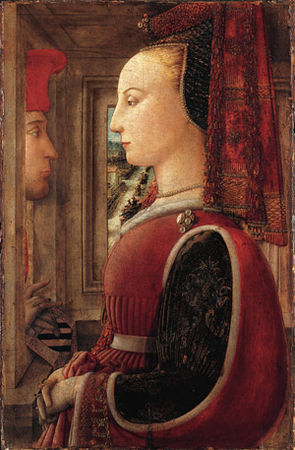
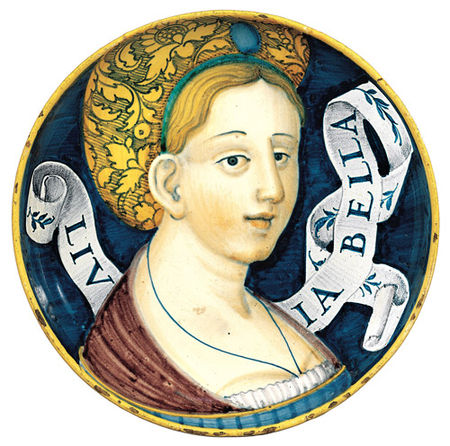








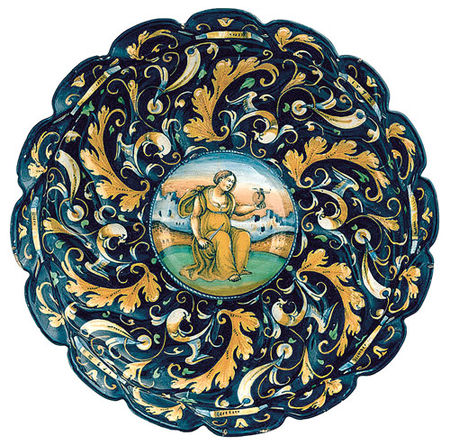









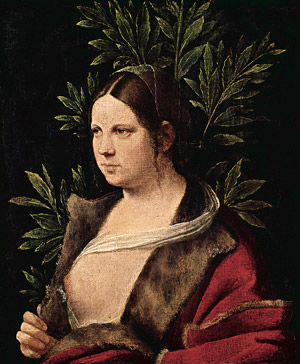





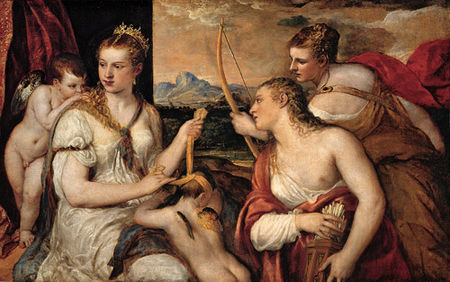
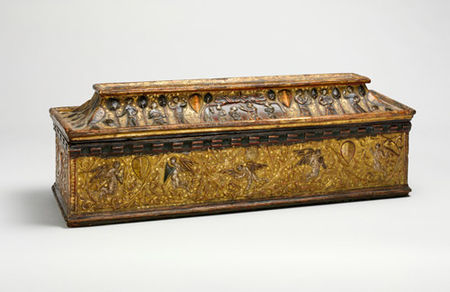






/http%3A%2F%2Fstorage.canalblog.com%2F37%2F11%2F119589%2F110569399_o.jpg)
/http%3A%2F%2Fstorage.canalblog.com%2F87%2F96%2F119589%2F110569121_o.jpg)
/http%3A%2F%2Fstorage.canalblog.com%2F42%2F65%2F119589%2F110531146_o.jpg)
/http%3A%2F%2Fstorage.canalblog.com%2F50%2F34%2F119589%2F110530294_o.jpg)